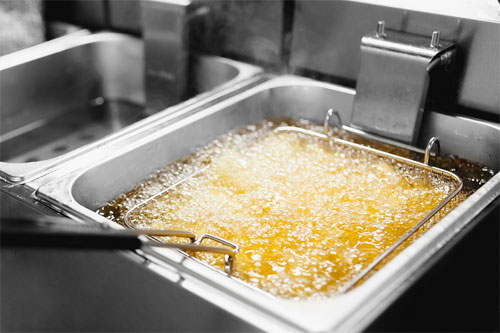 AI and IoT help increase operational efficiency and identify accurate part failure quickly.
AI and IoT help increase operational efficiency and identify accurate part failure quickly.
Foodservice has experienced a major drive to digital and sustainability over the last decade. Some of the latest pieces of commercial food equipment are starting to embrace new technology and best practices, including fryers. Operators can now lease or purchase deep fryers that allow them to do everything from tracking cook times to monitoring oil, ensuring their unit is always running efficiently.
But what does this mean for service companies and technicians?
Whether it's an emergency repair or scheduled preventative maintenance, customers look to service companies to help keep their fryer in peak condition. However, the days of simple millivolt gas fryers are starting to fade away. Some of the latest models are changing the way people use, maintain and service them.
We'll look at a few growing fryer trends and their impact on service companies.
1. Artificial Intelligence (AI) & Robotics
From burger-flipping robots to salad-making machines, the push towards AI has started creeping into many pieces of equipment in commercial kitchens. One robotics company recently announced that it hopes to bring this technology to fryers this year and will test out units that can flip and fry chicken wings. Operators can potentially speed up production even more in a fast-paced environment and combat labor shortage issues by using this robotic equipment.
What does this mean for service companies? The good news is that the makeup of these fryers should mostly be the same. That means the same components technicians regularly service will still need to be repaired or replaced throughout the lifespan of these units. However, there might be more emphasis on learning about specific diagnostics and repairs on the computers or control boards.
2. Internet of Things (IoT)
The term "Internet of Things" (IoT) has popped up a lot in the last decade or so. Essentially, IoT allows devices to extract, analyze and communicate data or commands to other devices without human intervention. By using IoT, smart fryers can let operators monitor batch sizes and product temperature during the cooking process. Some models also use sensors to update users when it's time to filter the oil or if a component is wearing down.
What does this mean for service companies? As connected fryers become more accurate at predicting when a part is starting to fail, this can be very helpful for service companies. Service agents can be alerted when a critical failure is imminent and get insight into the exact issue by having some access to their customers' smart fryers. This not only decreases extended downtime for customers, but it also helps reduce the length of the service call by potentially avoiding additional diagnostics.
 Countertop fryers could continue to pop up in select spaces.
Countertop fryers could continue to pop up in select spaces.
3. Countertop Designs
In the last few years, sustainability has been a key focus in foodservice. Reducing both energy consumption and space are two ways establishments can become more sustainable. Countertop fryers certainly help save on space. While they've been in the space for years, they weren't necessarily prominent in most commercial kitchens. With neighborhood restaurants downsizing their kitchen footprints and food kiosks and trucks looking to optimize limited space, a growing number of countertop options are hitting the market.
What does this mean for service companies? Again, these might not be brand new to experienced technicians who have seen these niche options in various restaurants and facilities over the years. However, one element that might catch a seasoned tech slightly off guard is that many new countertop fryers have built-in ventilation. This just means an extra layer of diagnostics and repairs, and some procedures will be reminiscent of what is conducted in hood ventilation systems.
One extra tip: Have some OEM air filters in your warehouse and service vans. Some customers forget that these need to be replaced every few months and a new filter might be the resolution to your service call.



